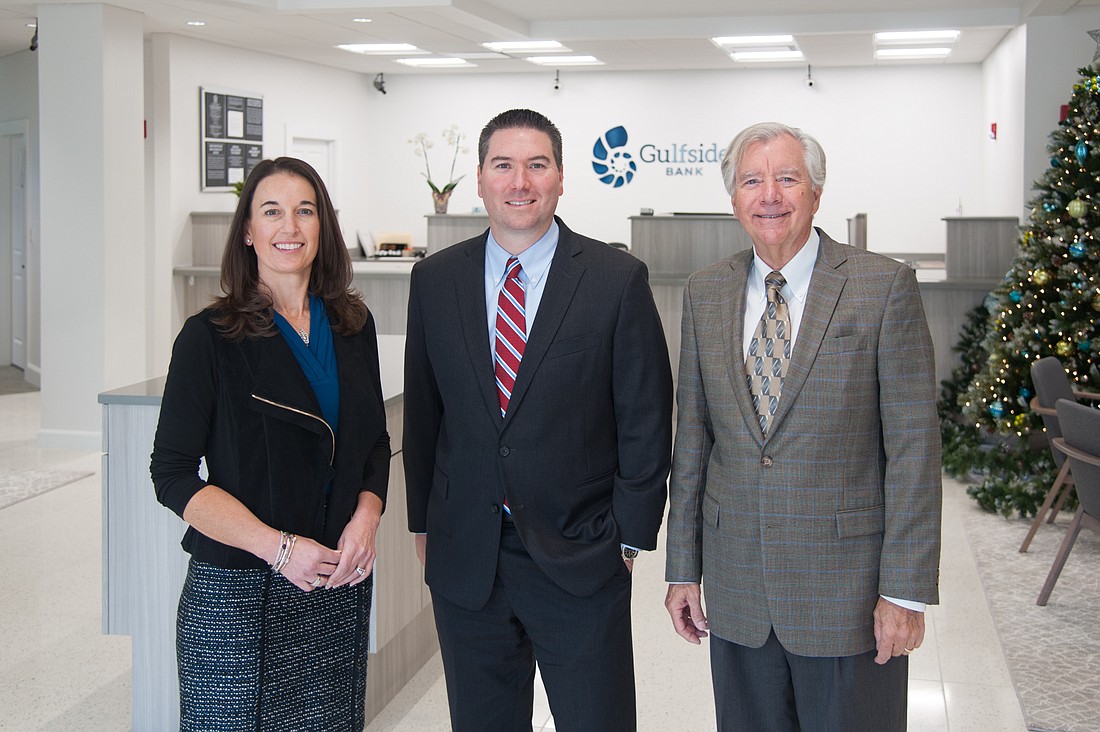- July 26, 2024
-
-
Loading

Loading

Last fall, Dennis Murphy left an executive post he had worked much of his career to achieve at CenterState Bank (Gateway Bank of Southwest Florida before that) to help start something — a new community bank in Sarasota.
“I had always wanted to do this,” he says. “It quickly became a no-brainer.”
A team to build a community bank had taken shape that included Murphy, the president and CEO of the new Gulfside Bank; Timothy Clarke, founder of Clarke Advertising & Public Relations and an organizer of Sarasota Bank and Insignia Bank; Jennifer Compton, a labor and employment attorney with Shumaker Loop & Kendrick and daughter of a community banker; and several more prominent business leaders.
“Each person is very ingrained in the local business community.” — Dennis Murphy, president and CEO, Gulfside Bank
Gulfside represents the first bank to form in the region in more than a decade, and one of the few new startup, or de novo, banks statewide — a testament to economic timing and an opportunistic strategy. It's also a testament to regulators easing up in capital and liquidity requirements after years of a de facto moratorium on new banks. The team behind the state-chartered bank has also emphasized building a strong board of directors, raising money locally and valuing business owners in its quest to gain a footing in the market.
Gulfside officials say one reason they wanted to start a community bank was because of diminished competition in the area after a wave of consolidation. CenterState, for example, closed on a $142 million deal in March 2017 to buy Gateway Financial Holdings of Florida Inc., the parent of the Gateway Murphy worked at, while Pompano Beach-based Stonegate Bank bought Insignia in 2016 for $36.5 million. (Arkansas-based Home BancShares has since acquired Stonegate.) Clarke, fortunately for Gulfside, owns the former Insignia building that now houses Gulfside.
When assembling the bank’s board of directors, Gulfside approached people who could bring business to the bank through their connections — not just cut a check. “Each person is very ingrained in the local business community,” Murphy says. “I love the cross-section of industry experience.”
Directors include professionals and leaders of businesses, foundations and real estate firms. Compton says Gulfside wanted people who could serve as ambassadors in the community.
During the process of approaching bank investors, meanwhile, the second startup step after assembling a board, the Gulfside team had weekly meetings, regular conversations and worked off a master spreadsheet to coordinate who was asking which specific person to invest.
Gulfside raised $23.5 million in eight weeks. The investments, Clarke says, were mostly raised through one-on-one lunches and dinners. Murphy adds that 98% or more of the bank’s 248 investors are local. “We believe that’s a show of the community supporting our efforts,” he says.
The startup phase also included hiring more staff. That’s been a challenging part of the process, Murphy says. “Most of the folks that you want are employed,” he says, and the trick is to make the case that they should switch to Gulfside. In three to six months, he expects the entire staff of 20 people to be in place.
In addition to staffing needs, costs to start the bank included renovations of the headquarters into modern, coastal look that plays off the name Gulfside.
Murphy, in total, says they projected it would cost $1 million to start the bank. They came in under budget, at $875,000.
Now comes a crucial part of the process: convincing people to bank with Gulfside. “Most community banks lead with commercial,” Clarke says, then retail customers come on board. “Where we usually add the most value is the business owner,” he adds, since owners appreciate working with bankers who know their story and needs.
Compton sees another point of differentiation: Sometimes, it can be hard to get a loan from a larger bank if a company doesn’t fit into a certain box. At Gulfside, she says, “The people who are making decisions are local,” and they know the community and the companies.